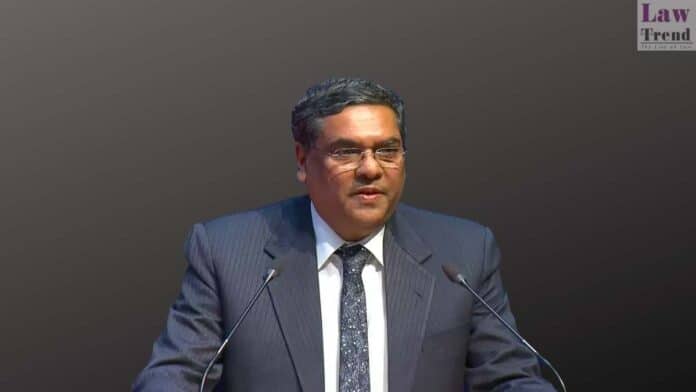Chief Justice of India Sanjiv Khanna on Saturday strongly advocated for mainstreaming mediation as a preferred mode of dispute resolution, describing courtroom litigation as “grim and shallow” and often incapable of addressing the deeper causes of disputes or healing fractured relationships.
Speaking at the inaugural session of the first National Mediation Conference, which was opened by President Droupadi Murmu, CJI Khanna said that mediation offers a humane, participatory, and restorative approach to justice—one that is particularly effective in resolving community-based and family disputes.
“In courtroom adjudication, one party is right, the other is wrong. In this way, courtroom litigation and adjudication are grim and shallow. At times, the root cause remains unaddressed, and the ailment and pain remain. The relationships are strained, if not broken. There is a winner, there is a loser,” the Chief Justice remarked.

He praised the inclusion of ‘community mediation’ in the Mediation Act, 2023, calling it a “salutary provision” and an important legislative step to promote peace and harmony in society.
“This is an important step forward. Community mediation can be an effective tool to resolve disputes that are likely to affect peace, harmony and tranquility among residents or families in a specific area or locality,” he said.
Justice Khanna lamented that despite its deep roots in Indian civilisation, mediation is still not the primary choice of parties in dispute. He stressed that modern mediation tools are equipped to deliver outcomes that traditional adjudication cannot.
Contrasting the mediation process with courtroom trials, the CJI said that litigation often leads to polarisation and unresolved emotional distress, whereas mediation seeks a “holistic solution” by going to the root of misunderstandings and aiming to restore the relationship between the parties.
“Because the process is voluntary and participatory, the solution reached is less traumatic, more humane and acceptable,” he observed.
He further shared that between 2016 and early 2025, an estimated 7,57,173 cases had been successfully settled through mediation—an indication of its growing relevance and impact.
Explaining the distinct approaches of judges and mediators, the Chief Justice said:
“While a judge attempts to find who is at fault among the litigants who advance their case through argumentative lawyers, a mediator goes beyond the binaries and attempts to resolve misunderstandings, which is often the mother of most litigations.”
He described mediation as flexible, personalised, and empathetic, unlike formal litigation, which is bound by procedural constraints.
“Mediation offers space by undoing complexity. It does not involve legal and procedural complexities. And above all, it is empathetic—aiming not to win over the other side, but to bring together,” he noted.
Highlighting the importance of the mediator’s role, CJI Khanna emphasised the need for neutrality and deep perceptiveness:
“A skilled mediator senses not only what is being said, but what lies beneath the words.”
The National Mediation Conference marks a significant effort to promote awareness and adoption of mediation practices in India, aligning with the judiciary’s broader efforts to reduce pendency and promote amicable dispute resolution.







